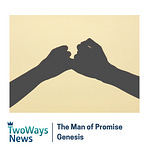Time to pause from the regular rhythm of Payneful episodes, and discuss some of the many excellent questions and comments that you keep sending in.
About the gospel
The various Two ways to live related posts about the nature of the gospel (and our preaching of it) have prompted numerous insightful comments and questions.
John, for example, posed this fascinating one:
With regard to preaching the cross/preaching the resurrection—obviously Christ crucified is a BIG deal (e.g., 1 Corinthians 1:18-2:2). So it’s got to be there in our preaching. But in Acts there is so much on the resurrection and preaching the resurrection. It is the resurrection that gets Paul into trouble with the religious leaders and it is the resurrection that he preaches in Acts 17, especially 17:32. The questions that arise (at least for me) are how do we know when and where to focus on one or the other? And why the shift/change/difference in focus (in Paul’s preaching)?
Interestingly, when Paul summarizes the gospel that he received and which he faithfully delivered to the Corinthians in 1 Cor 15, he straightforwardly includes both cross and resurrection. In fact, he also throws in the fact of the burial and the witnesses to the resurrection, just to make sure we appreciate that this was a real, historical death and resurrection:
For I delivered to you as of first importance what I also received: that Christ died for our sins in accordance with the Scriptures, that he was buried, that he was raised on the third day in accordance with the Scriptures, and that he appeared to Cephas, then to the twelve. Then he appeared to more than five hundred brothers at one time, most of whom are still alive, though some have fallen asleep. (1 Cor 15:3-6)
Cross and resurrection are inseparable. In one context, you might lean harder on the cross (as Paul does when beginning to address the problems of the Corinthian church in 1 Cor 1-2), but the resurrection is never far away. In that passage, the clue is in the word ‘Christ’. The resurrected, ruling Lord of all (the Christ) is the one who was crucified.
And indeed—as Paul gets towards the end of the letter, he turns to the resurrection and thumps that pretty hard (in chapter 15).
In Acts 17, he leads with the resurrection—but again, it’s a resurrection from the dead. I’ve no doubt that in discussing things further with Dionysius and Damaris and the others who ended up believing, the meaning of that death was fully explained!
I think the different emphases at different points in the NT’s recording of how the gospel was preached show that every gospel presentation isn’t exactly the same. But if we don’t ‘deliver’ the full message of both cross and resurrection to our hearers (whether all at once, or over extended interaction with them), then I don’t think we’ve been faithful gospel couriers.
In my observation of evangelical proclamation (over the past 30 years), by far the most common problem is a failure to integrate the resurrection into our message. It’s either not mentioned, or tacked on as an afterthought. The result is that while we often fully explore what it means for Jesus to offer forgiveness and salvation on the basis of his atoning death, we regularly fail to proclaim Jesus as the risen Christ, the Lord of all, before whom we must repent, and whom we joyfully obey and serve.
Bad things follow.
The second main gospel-related question that has been asked in various forms over the past few months has been in response to my piece about ‘one gospel, many forms’. I argued that although the people we meet and talk to will have a range of issues, questions and backgrounds—and so every conversation will be different, and often will start in a different place—nevertheless, the gospel we end up explaining should be the same gospel, the one gospel. It’s not a different gospel for each person, adapted to what is most likely to connect with their particular desires or cultural narratives.
I’ve had a number of fascinating conversations about this, and a new thought that I’d like to share—but it’s worth a discussion all of its own, rather than a brief comment here. I will save it for next week’s edition.
About livestreaming
My post a couple of weeks ago about the ongoing usefulness of livestreaming our church meetings, and the theological issues involved, sparked lots of helpful comments.
Warwick spoke for quite a few when he commented:
We find that increasingly that folk check us out online before they come in person. It used to be that they simply looked at our website. Now it is joining with online church.
We only had 10 weeks of meeting in person before we were closed again. In those 10 weeks we had so many people come who'd never been to a physical church meeting with us before.
It seems that the new ‘front door’ for many churches (over the past 12 months) has become the livestream—and if we have the resources to maintain that over time (and keep up the quality), then it seems like an opportunity worth taking up.
Peter wrote with a more searching question about the nature of ‘gathering’:
The one hour zoom gathering has many features of a physical gathering—we greet each other, we have lots of organised and more informal participation of participants during the meeting (including praying out loud, Bible readings, testimonies, and gathering in small groups to keep in touch and pray for each other). The youtube sermon is not unlike listening to the Pastor preach—although perhaps it is far easier to make comments out loud about the content and style than one would do in the presence of other church members.
Obviously in a 'touchy feely' culture, people miss the physical aspect of greeting and farewelling.
My reflection on that is that it is worth reflecting more carefully on what is the nature of ‘gathering’. By Zoom we gather, we talk to each other, we edify each other. I've no doubt Jesus is ‘in our midst’, whatever that means in a virtual environment.
So I'm interested to hear more on what constitutes ‘gathering’ as a theological concept.
The ‘Zoom gathering’ is certainly a Christian meeting or encounter, and provides for many excellent and edifying things to happen. Like all genuine expressions of Christian fellowship, it contributes to the building of Christ’s ‘heavenly church’ through the word and prayer.
All the same, theologically speaking, I don’t think we can escape the embodied nature of our creatureliness, and thus the inescapably embodied nature of ‘gathering’ or ‘assembling’ (or ‘churching’). In a thousand different ways, being together bodily shapes what we experience—how we listen, how we preach, how we speak to each other, how we pray and sing and rejoice and cry, how we eat and drink together (in the Lord’s Supper and in other ways), and so on.
This mode of actually being together—and encouraging each other as we do so—is the gathering that Hebrews 10 is telling us not to neglect, even though the author knows and affirms that we are ‘virtually together’ at all times (in the heavenly gathering of chapter 12).
This doesn’t, of course, mean pressing for a return to physical gathering if it’s unsafe or unwise to do so. But it does mean prioritizing the (physical) gathering.
About preaching as ‘doing’
In last week’s edition, I put forward a newish definition of preaching to think about: that our goal when we preach is to do for our hearers what God was doing in the passage of Scripture we are expounding. (For non-partner readers who are curious, I’ll open up access to that post so you can check it out.)
Angus and Simon got in touch with variations of the same question. Angus put it like this:
Is it reductionistic to think the words on the page only had one ‘act’ (that’s your implicit/explicit statement, I think)? How does Israel respond to hearing and how do we respond to hearing? Does the cross reduce the text to having one major ‘act’? Does our eschatological position mean God’s word ‘acts’ differently?
If I can summarize Angus’s four questions in one: if I focus on what God is doing in this passage (and try to do the same in my sermon), won’t I be at risk of flattening out the Bible, and missing its unfolding Christ-centred shape (i.e. ‘biblical theology’)? Will I fail to preach Christ?
My short answer to this excellent question is as follows: What God is doing in this particular passage can't be isolated from what he is doing in the whole Scriptural revelation, which focuses on Christ. We can’t preach what God is doing in any particular OT passage, without having in our minds the meta-level NT explanation of God’s overall purpose in the OT—of making promises that point to Christ (2 Cor 1:20) and providing examples and encouragement for his people (1 Cor 10:11).
And likewise, we can’t preach any NT passage without some awareness (and in some passages it will need to be a keen awareness) of how what this passage is ‘doing’ only makes sense in light of what God has been doing for ages past.
I think this is also where the action or force of a passage, and its expected or implied response are worth distinguishing. The response of Israel will be different in various ways from our response as readers this side of Christ. But what God is doing as he speaks through this particular text still needs to shape the particular action and emphasis of the exposition of the passage.
As part of the training work at CBS, I’ve developed a little methodology for preparing to preach a passage using this What-God-is-doing framework. It teases the idea out a little more, and shows what it means in practice.
I’ll send it round as a bonus article later this week.
PS
This week’s post is one of the free public ones I send out every three weeks or so (although I think I will make next week’s edition a freebie as well—given that it’s a kind of continuation of this week’s). If you want to get every edition, every week, and provide some valuable support for the broader writing ministry I do, you can click this button and become a ‘partner’ for a few dollars a month:
What better image for this week’s post than the poster for the 1990 movie Q&A? The tagline for the movie: When the questions are dangerous, the answers can be deadly.











